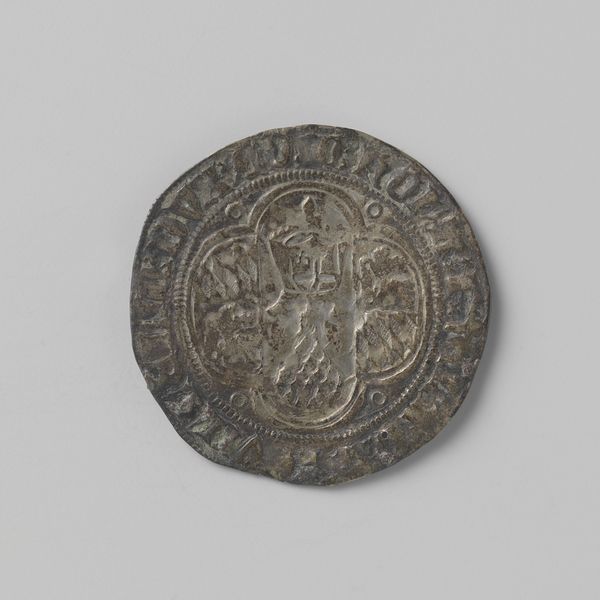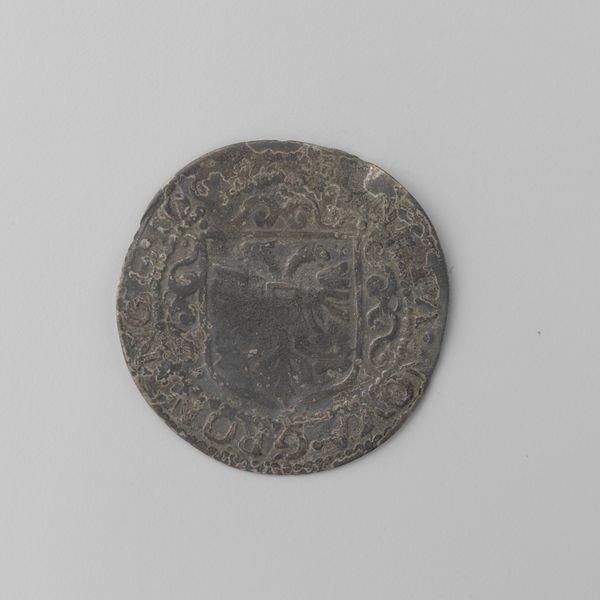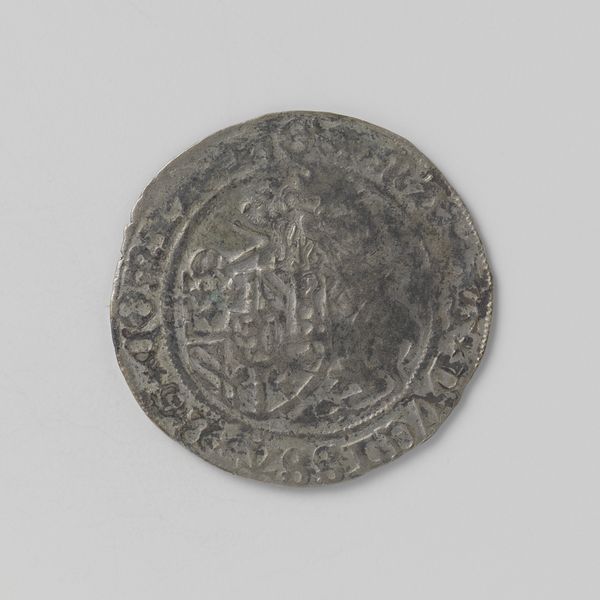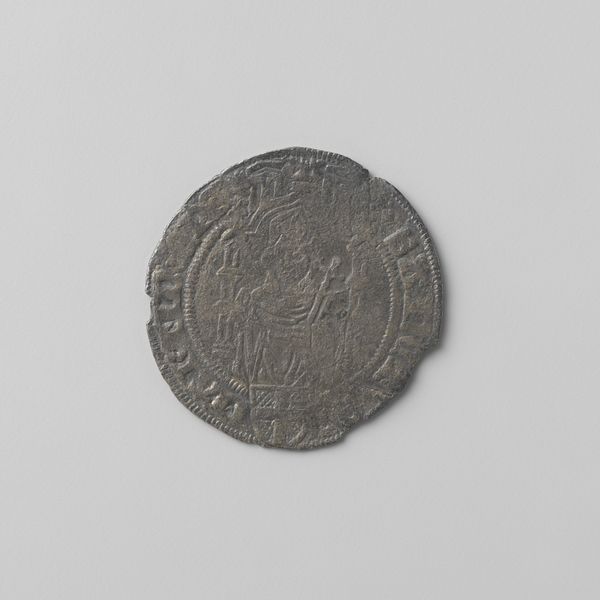
metal, engraving
#
portrait
#
medieval
#
metal
#
geometric
#
engraving
#
miniature
Dimensions: diameter 2.6 cm, weight 1.48 gr
Copyright: Rijks Museum: Open Domain
Editor: This object is the Groningse Vlieger from 1560, crafted from metal with engraving. It’s a small, somewhat damaged coin. I’m struck by the imagery; it seems quite grand for something so small. How should we interpret this kind of object? Curator: This isn't just currency; it's a declaration. Currency functioned as propaganda, visually reinforcing the issuer’s power. The 'Groningse Vlieger' demonstrates the city's desire to assert its autonomy during a politically fraught time. Do you notice the eagle? Editor: Yes, a prominent double-headed eagle in the centre, above what looks like a shield? Curator: Exactly! The double-headed eagle, an imperial symbol, makes a bold claim. For Groningen, a city striving for greater independence from larger powers, to adopt such iconography sends a clear message about their aspirations. Editor: So, even everyday objects were invested with political significance? How did the public perceive it? Curator: Absolutely. Its impact likely shifted based on social status. Common people viewed it as money. Political elites immediately grasped the implied symbolism, and perceived aspirations of control by Groningen. Editor: I see. The visual language broadcasted power to some, while others engaged on a purely transactional level. I guess I had never really thought about coins having different social roles. Curator: It forces us to consider how even mundane objects operate within power structures, consciously or subconsciously shaping perceptions and narratives. Editor: That's fascinating. Thanks for sharing your perspective! I see this Vlieger, not just as metal now, but as an intriguing artifact of history.
Comments
No comments
Be the first to comment and join the conversation on the ultimate creative platform.













